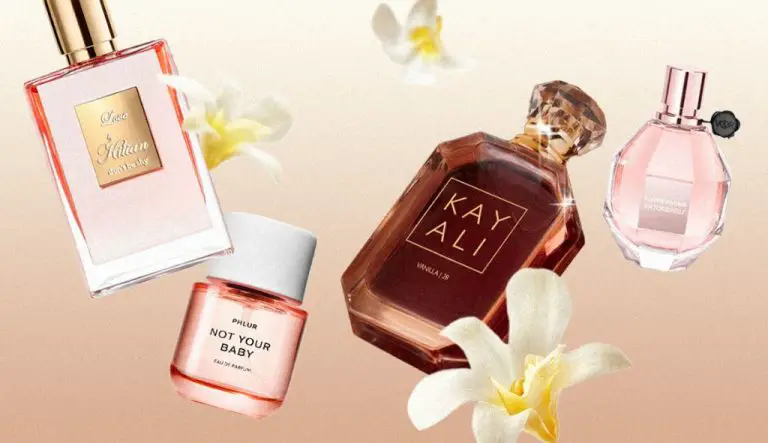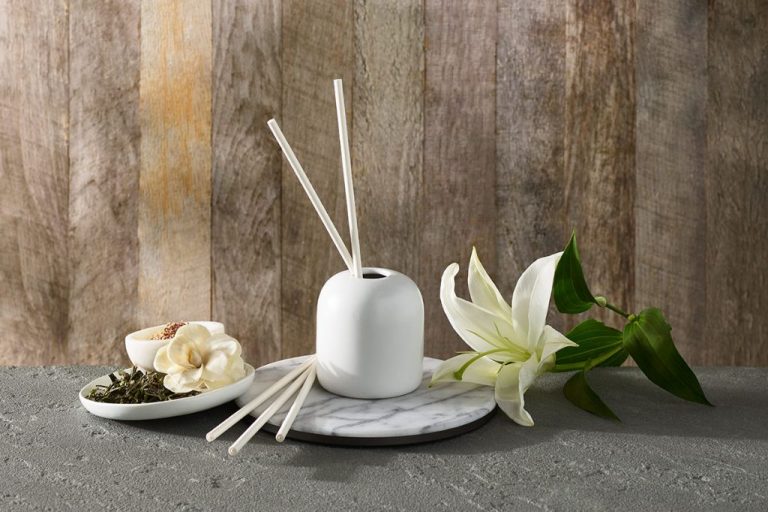How To Make Scented Candles In Nigeria?
Scented candle making has become an increasingly popular hobby and small business venture across Nigeria in recent years. With Nigeria’s growing middle class, entrepreneurs are finding opportunities in the candle-making industry. The reasons are twofold – scented candles make inexpensive yet thoughtful gifts, and they can also serve as a lucrative side business.
Candle making allows for creativity and self-expression. Hobbyists can experiment with different scents, colors, and designs to create candles that reflect their own personal flair. The process itself can be intrinsically rewarding and relaxing. Custom scented candles also make heartfelt gifts for friends and family.
For those seeking extra income, handmade candles can fetch premium prices, especially if marketed to upscale boutiques, hotels, spas, or as customized wedding favors. With raw materials sourcing mainly local beeswax and palm oil, barriers to entry are low. Startup costs for basic supplies are minimal. And as a cottage industry run from home, overheads are low while profits can be relatively high.
In this guide, we’ll walk through the entire process of making scented candles in Nigeria – from acquiring materials to pouring, decorating, troubleshooting, and growing a business. With the right passion, effort, and persistence, candle making can be an engaging hobby or viable small business.
Benefits of Making Your Own Candles
Making your own scented candles has many benefits. First, it allows you to tap into your creativity and express yourself. You can create customized candle scents that reflect your personality or mood. Blending fragrance oils is an art, so you can get creative and make signature scents.
Another major benefit is cost savings. Buying premade candles can be quite expensive. But making them yourself using basic supplies like wax and jars allows you to produce beautiful candles at a fraction of the cost. You’ll also control exactly what goes into your candles, including using higher quality ingredients.
Crafting candles yourself also makes easy and thoughtful homemade gifts. Scented candles created with care make wonderful presents for birthdays, holidays, hostess gifts, and more. You can customize candles based on the recipient’s preferences. And a homemade candle gift shows you put time and effort into making something meaningful.
Finally, making your own candles allows you to produce exactly what you want. You can reuse jars and containers around your home. Choose your perfect colors and fragrances. And avoid harmful ingredients sometimes found in store-bought candles.
Supplies Needed
To make scented candles, you will need the following basic supplies:
Wax
The most common types of wax for candle making are paraffin, soy, and beeswax. Paraffin wax is inexpensive and easily accessible. Soy wax is made from soybeans and is a natural, clean-burning option. Beeswax is all-natural but more expensive. Choose the type of wax based on your budget and preferences.
Wicks
Wicks draw the wax up as it melts so your candle can burn. The width of the wick should match the width of your candle container. Pre-tabbed and pre-waxed wicks are easiest to work with.
Fragrance Oils
Use pure fragrance oils marketed for candle making. Avoid essential oils, which can cause soot. Popular fragrances include floral, fruit, spice, and seasonal scents.
Containers/Jars
Glass and metal containers such as mason jars and tin cans make great candle vessels. Make sure the opening is at least an inch wider than the wick’s flame.
Double Boiler or Crock Pot
A double boiler or crock pot allows you to safely melt wax at the proper temperature. Don’t melt wax directly on the stove.
Thermometer
A thermometer with a clamp is essential for monitoring wax temperature. Different waxes require different melting points.
Dyes, Glitter, Embellishments (optional)
Customize your candles with dye blocks for color or creative embellishments like glitter, seeds, dried flowers, etc. But keep embellishments minimal for the best burn.
Choosing Wax
When making scented candles in Nigeria, there are several types of wax you can choose from. Some of the most common options include:
Soy Wax – Made from soybeans, this natural wax has a low melting point and no petroleum ingredients. Soy wax blends well with essential oils and is a clean-burning, eco-friendly option. The drawback is that soy wax is prone to frosting and can be tricky to work with.
Paraffin Wax – A petroleum-based wax, paraffin is inexpensive and easy to use. It creates candles with excellent scent throw. However, paraffin produces more soot than natural waxes when burning. Some find the fumes unpleasant as well.
Beeswax – Made by honey bees, natural beeswax has a subtle honey aroma. It’s compatible with essential oils and creates long-burning, drip-resistant candles. The downside is beeswax is expensive and challenging to source in Nigeria.
Palm Wax – Derived from palm oil, this vegetable-based wax blends well with fragrances. It’s harder than soy wax yet still eco-friendly. Palm wax can be difficult to find in Nigeria and may be unsustainably harvested.
When purchasing wax, look for reputable candle making suppliers in Lagos, Abuja, or online. Consider the properties you want – ease of use, scent throw, burning time, etc. Test different wax types to see what works best for your needs and preferences.
Choosing Fragrances
When making scented candles, choosing the right fragrances is key to achieving the scent you desire. There are several options for candle fragrances:
Types of Scents
Some popular types of scents for candles include:
- Floral – Rose, jasmine, lavender, etc.
- Food/Fruit – Vanilla, cinnamon, lemon, etc.
- Essential Oils – Tea tree, eucalyptus, peppermint, etc.
Consider what mood you want to set or ambiance you want to create when selecting scents. Floral and food fragrances are often comforting, while essential oils can be energizing or have other benefits.
Where to Buy
Candle making suppliers will offer a wide selection of fragrances to choose from. You can also find essential oils at health food stores. Some sellers even allow you to purchase sample sets of fragrances to test out.
Fragrance Load Tips
Follow the usage instructions on your chosen fragrance. Using too much or too little can impact scent throw. A standard fragrance load is around 5-10% of your wax weight. Adding more fragrance means a stronger smell but can increase instances of frosting.
Preparing Containers
Choosing the right container is one of the most important steps in candle making. The two most common options are glass and metal tins, each with their own advantages.
Glass containers allow you to see the candle wax and create visually appealing layered looks. Glass also retains heat well to fully melt the wax. Before using, wash thoroughly with soap and water, then rinse and dry completely. Avoid containers with any chipping or cracks which could weaken the glass when hot wax is poured in.
Metal tins like aluminum are inexpensive, sturdy and conduct heat efficiently for full wax melt. Clean tins first with soap and water, taking care to remove any interior coating or residue. A slip solution of 1 tsp vegetable oil and 2 drops dishwashing liquid mixed with water can help remove coatings. Fully rinse and dry metal tins before pouring wax to prevent bubbles or adhesion issues.
Other candle vessel options like wood, cement, or terracotta must also be cleaned before use. Avoid containers with cracks or paint that could interact with hot wax. Fully cure any sealants before pouring candles. Prepared containers should be slightly warmed before adding wax to help the wax fully adhere to the sides.
Making the Candles
Making scented candles is a fun and rewarding process. Here are the step-by-step instructions for making candles after you have chosen your wax, fragrance, and containers.
Melting the Wax
Pour the wax into a melting pot or slow cooker and turn the heat to medium-low. Allow the wax to melt completely. The melting point varies depending on the type of wax you are using. Paraffin wax melts at about 130-150°F. Soy wax melts at 115-130°F. Avoid overheating the wax as this can cause discoloration.
Adding the Fragrance
Once the wax has fully melted, you can add the fragrance oil. Use about 1 ounce of fragrance per pound of wax. Stir thoroughly to incorporate. Adding the fragrance when the wax is melted allows it to bind properly.
Pouring into Containers
Carefully pour the melted, fragranced wax into each container, leaving about 1/4 inch of headspace. Make sure your containers are clean and dry. Allow the candles to cool slightly and top up with more wax if needed.
Setting Time
Allow the candles to fully set and harden, which can take 6-24 hours depending on wax type. Do not move or disturb the candles during this time. Once set, you can trim the wicks to 1/4 inch before burning.
Shaping and Decorating
Once your candles have cooled and hardened, it’s time for the fun part – shaping and decorating them! Here are some tips for making your candles look as beautiful as they smell:
To create shaped candles, pour your wax into silicone molds. You can find molds in all sorts of fun shapes like stars, hearts, flowers, animals, and more. Make sure to prepare your molds properly by coating them in a mold release spray so the candles pop out easily.
Add a few drops of liquid candle dye to your melted wax before pouring to create colorful candles. You can mix colors to make custom shades. Just be careful not to add too much dye or it may clog your wick.
Get creative with your wicks to make them part of the decoration. Try using tinsel or glitter wicks, or bend the wicks into shapes like spirals before inserting them into the container. You can also use wicks of varying thickness to create cool effects when the candle burns.
Once cooled, you can decorate the surface of plain candles with glitter, beads, sea shells, dried flowers, and more. Try drizzling or dipping them in a contrasting color of melted wax for a marbled effect. The options are endless for personalizing your candles!
Troubleshooting
Making candles is a fun hobby, but you may run into some problems as you get started. Here are some common issues and how to fix them:
Scent Throw Problems
If your finished candles don’t have much scent when burning, there are a few things you can try:
- Use more fragrance oil – Start with the manufacturer’s recommended percentage, and experiment with adding more until you get the scent throw you want.
- Use fragrance oils designed for candles – Some fragrance oils are formulated specifically for candle making and have better scent throw.
- Double wick your candles – Adding a second wick can increase scent release.
- Cure your candles longer – Scent throw can improve with a longer cure time of 1-2 weeks.
Tunnels, Frosting, and Wet Spots
Problems like tunnels, frosting, and wet spots indicate issues with wick size, pouring temperature, or cure time:
- For tunneling, use a larger wick or pour wax at a lower temperature.
- Frosting happens when the candle cools too quickly – pour wax at a slightly higher temperature.
- Wet spots are caused by pouring too hot – allow wax to cool more before pouring.
- A longer cure time can also help correct these issues.
Starting a Candle Business
If you want to start selling the candles you make, there are a few things to consider:
Regulations and Licensing
Make sure you obtain any required business licenses or permits in your state or municipality. Since you’ll be working with flammable materials, there may be special regulations for candle manufacturing businesses. You may need a permit for your production facility and to register your business name. Look into product liability insurance as well.
Marketing and Branding
Come up with a memorable brand name and design appealing packaging to make your candles stand out. Establish a brand identity through your logo, labels, website, and social media. Consider selling at local fairs, farmer’s markets, or boutiques to get exposure. An online store can help you sell far and wide.
Pricing and Selling
Factor in all your material costs and time spent making each candle. Add in overhead costs and your desired profit margin. Compare competitors’ pricing. You may be able to charge more for unique scented candles. Offer promotions and discounts to attract customers. Get feedback to improve your products.
Growth Opportunities
Consider expanding your product line with candle accessories or home fragrance products. Partner with other local businesses to reach new customers. Hire help if production ramps up. Look into exporting if you want to sell internationally. Stay innovative and keep refining your craft.




